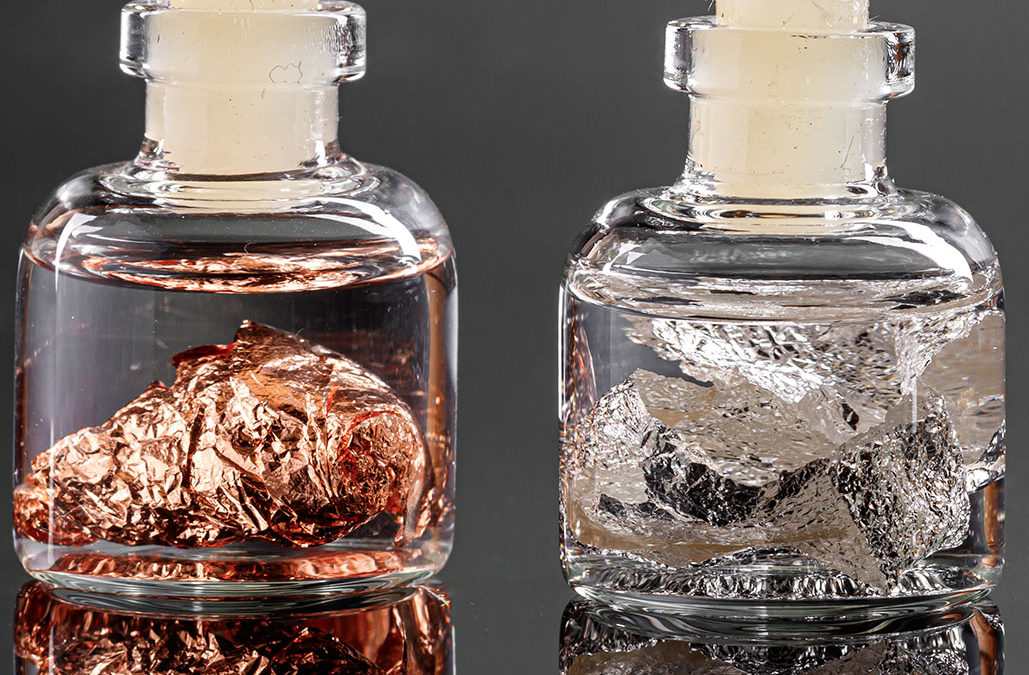High-grade copper + silver over 250m could be game changer for Max
2020.10.31
Max Resource Corp’s (TSX-V:MXR, OTC:MXROF, FSE:M1D1) CESAR project in northeastern Colombia lies at the northern end of the Andean Copper Belt, which represents nearly half of the world’s copper production. The belt runs from northern Chile in the south, through Ecuador and Colombia, then arcs northwest into Panama. It hosts some huge copper porphyry (and gold, molybdenum) deposits including Escondida, Chuquicamata, Las Bambas and Collahuasi.
Colombia’s Cesar and Magdalena sedimentary basin is a related geological belt, that was being formed over the same geological time period and has most certainly been influenced by the same mineralizing fluids that have created the prolific Andean Copper Belt which it overlaps. The sedimentary basin is a massive geological feature that extends for over 1000 kms from the Northern tip of Colombia southwards through Ecuador and Peru. The basin was a sea bed trapped behind the uplifting Cordillera mountain ranges and the model suggests that rich copper and silver bearing fluids flooded up into the basin and deposited as they came in contact with organic matter on the sea floor.
The basin was long lived and collected organic material over millions of years in the basin as well, which now boasts some of the richest coal and natural gas deposits in South America. As such the region enjoys major infrastructure including a municipal airport, a shipping terminal 180 km to the northeast and the town of Barrancas, population 37,000, 70 km north by paved roads. Mining operations include Cerrejon, the largest coal mine in Latin America, jointly owned by global miners BHP, XStrata and Anglo American.
Max commenced its exploration in the CESAR basis almost one year ago. After acquiring the property, located 420 kilometers north of the capital Bogota, the company embarked on a first-pass exploration program to identify surface outcrops, and to evaluate the potential for expanding its copper holdings.
Max has been sending teams of prospectors out into the field over a 40-km target zone. The prospecting teams are proving evidence of the copper silver sedimentary beds over vast distances, formerly sea floor which has now been pushed up to the surface by a series of faults into low lying hills. After visually identifying the presence of mineralization continuous rock chip panel samples and composite grab samples from the outcrops are taken, to identify structures, continuity of thickness, strike length and potential size, prior to drilling.
Kupferschiefer analogy
Its recent AM North and AM South discoveries are hosted in well-bedded sandstone-siltstone thought to be similar to KGHM’s monster “Kupferschiefer” mines in Poland.
Max’s technical team is building their geological model based on KGHM’s Kupferschiefer, Europe’s largest copper deposit, and the world’s leading silver producer.
The fact that the AM North and AM South targets appear to be large sub-horizontal sheets, that repeatedly outcrop at surface, adds credibility to the Kupferschiefer analogy – as do the results from a recent study by Poland’s AGH University, indicating the silver mineralogy at CESAR is similar to Kupferschiefer. (more on that below)
In Poland’s Kupferschiefer deposits, continuous mineralization extends down dip and laterally for many kilometers. Could the mineralization at CESAR do the same? If so, Max could be looking at a district-scale, even a regionally extensive copper silver mineralized system.
Please note, the average overall CESAR target grade is 1.0% copper + 20 g/t silver. The high-grade zones at CESAR lower the cut-off grades, which significantly increases the tonnage – it’s all about scale.
Using seismic data for drill hole targeting
Energy companies looking for oil and gas in the Cesar and Magdalena sedimentary basin have drilled dozens of large diameter holes into the basin. The government requires the cuttings and data from these holes to be stored in a national facility for future evaluation.
Max plans to utilize these existing historical drill samples and related seismic data in its next stage of evaluation of the basin saving 10’s of millions of dollars in drilling. The same tools (drill hole and seismic) have been used by KGHM at Kupferschiefer in Poland. The mineralized horizon intersected by a drill hole is projected onto the seismic profile and then the mineralized stratabound horizon is traced along its strike or dip. This technique generates a 3D model of the paleo-topography of the mineralized horizon and selects more prospective areas for future drill targets.
Using the Kupferschiefer exploration model, potential district-scale tonnage could be demonstrated at CESAR by interpretation of the copper and silver horizons at surface, with copper and silver mineralization at depth. The drill core chips can give Max some very good evidence of what lies below. The seismic can trace the horizons from kilometers below the surface and/or link known surface outcropping mineralization with mineralization intersected by a drill hole.
Moreover, identification of copper in the historical oil and gas drill holes could be enough to demonstrate to majors the potential of CESAR to be a Kupferschiefer look-alike.
It’s possible that the mineralized areas Max has identified at surface (ie. AM North and AM South) will correlate with the mineralization that Max expects to encounter at depth in the historical oil and gas drill holes. That would enable Max to build a significant strike length and down dip extension of presently known mineralization.
For now, Max’s Q4 focus is initial access to the oil and gas drill results and seismic data, and executing its November/December field exploration. Key to the program will be obtaining and publishing significant AM North and AM South assays, as well as getting the results from a property-wide geophysical survey by Fathom Geophysics, as Max seeks to expand its landholdings to a district-wide scale.
Major/ mid-tier interest
Max has entered into three non-exclusive confidentially agreements regarding the CESAR project: the first with one of the world’s leading copper producers, a second with a global mining company and a third with a mid-tier copper explorer.
The first phase of the partnership with one of the yet-to-be-named companies, involves a technical study by Fathom Geophysics.
The aim of the study is to map stratigraphic (rock layers) features that can help to pinpoint additional stratabound copper-silver mineral horizons at CESAR.
Having two majors and one mid-tier involved so early – just 10 months into an exploration program – validates Max’s Kupferschiefer exploration model, and the results thus far.
If Max can demonstrate the potential “regional scale” of CESAR, a major or mid-tier may jump in early and buy it out, as the prize could be far too big to ignore.
AM North discovery
In February 2020, Max reported two significant stratabound discoveries at a new zone called “AM North” located on trend 40 kilometers north of AM South.
The 11-km AM North consists of two mineralized zones, Herradura and Ventana. The Herradura stratabound copper-silver mineralization is open in all directions and currently traced for 2 km along strike, and 3 km of down dip, in erosional windows along the valleys. To the south along the same mineralized trend lies the newly discovered Ventana copper-silver mineralization. Ventana has been mapped and sampled over a 3 x 1.5 km area, and is open in all directions.
Herradura composite grab samples over 25-metres
To us at AOTH, the CESAR project just got a whole lot more interesting with the publication on Wednesday, Oct. 28 of a series of grab samples taken from the Herradura zone at AM North. In fact, the results could be a game changer.
The individual sample results are listed below:
- 5.8% copper + 51 g/t silver over 25-metres (#875507)
- 5.2% copper + 58 g/t silver over 25-metres (#875503)
- 3.3% copper + 32 g/t silver over 25-metres (#875504)
- 2.4% copper + 23 g/t silver over 25-metres (#875508)
- 0.9% copper + 7 g/t silver over 25-metres (#875505)
- 0.5% copper + 5 g/t silver over 25-metres (#875506)
Each of the composite samples were taken from the available outcrop over 25-metre intervals and combined into one sample – (The 25m sampling is across (down dip) at various points along 250m).
The average grade along 250-metres is 3.0% copper + 29 g/t silver. These results are extremely significant as they clearly demonstrate the persistence of copper-silver mineralization over 250-metres.
Taken together I picture the continuous grab samples as a horizontal drill hole. I’m not concerned sample weights were not given. What’s more important is that the samples were truly representative, not a bunch of juicy rocks taken from one place, then a single rock from another spot. I’d much rather see these continuous grab samples then one ‘boulder’ (that weighs less than a pound, call it what it is, it’s a rock) from a large area.
Let’s put the proper term to what Max is doing, its prospecting, reconnaissance sampling. A first pass look-see to identify copper + silver mineralized outcrops, later followed up with mapping and systematic channel sampling.
This discovery is significant for other reasons. For the first time, Max is able to show a wide expanse of mineralization, best visualized using the maps below. Secondly, the mineralogy of the grab samples is encouraging because they indicate the presence of chalcocite, an extremely desirable copper mineral to have.
Figure 2 shows the area within the Herradura zone of AM North that the grab samples were taken from. A close-up of the 2-km Herradura horizon appears in Figure 3. Near the middle of the yellow line is the 250 metres comprising six continuous grab samples, each 25 meters long. The six evenly-spaced red dots, shown in Figure 4, should be very exciting to Max investors, because they give an indication of how continuous the down dip mineralized zone is. Potentially a 250m-wide swath running along the entire 2-km Herradura horizon? Obviously more samples will need to be taken, and Max notes the full width of the copper-silver horizon – the outcrop – is not exposed, but the possibility is intriguing to say the least.
The Company considers these results to be extremely significant as they clearly demonstrate the persistence of copper-silver mineralization over 250-metres, Max states in the news release.
Now we don’t yet have any idea how deep this block of mineralization, visualized as the square-shaped gradient in Figure 4, could go. The results that have been reported are down dip, but are continuously exposed along and paralleling the surface of the hill. Max, or one of the majors/ mid-tier it has partnered with, can now easily follow up to drill-test how deep the surface mineralization runs.
The consistency of the mineralization in these grab samples is also noteworthy. In mineral exploration what you want is consistency. It’s difficult to build a resource in areas where the high-grade areas are spaced far apart, with lots of low-grade, or no grade, in between. Here the samples are showing good consistency, for example where 0.3% copper is found, you get 30 g/t silver, 0.5% Cu yields 50 g/t Ag in a number of samples, etc. It’s indicative that where you have copper, you’re going to get 10x thesupporting silver grades.
“While the geometry of the outcrop exposures indicate that the copper-silver horizon appears to be close to paralleling the slope, we are extremely encouraged to see the distribution of copper-silver mineralization that continues along 250-metres of the horizon,” said Max’s CEO, Brett Matich.
Regarding the mineralogy, Max states, The absence of visible copper oxides (malachite or azurite) in these samples indicate the dominant copper mineral is likely chalcocite which carries a higher (80%) copper content.
Why is this important? Readers may recall back in August, at AM South, Max announced the presence of native silver and silver-bearing copper sulfides – as reported by AGH University’s (in Poland) ongoing mineralogical/ geochemical studies of CESAR.
The university researchers used “Energy Dispersive X-Ray Spectroscopy” (EDS), a technique that bombards the sample with an electron beam, to identify its composite elements.
According to the news release, The presence of silver-bearing chalcocite and covellite as well as native silver was identified using “Energy Dispersive Spectroscopy” (EDS) analysis.
That is meaningful, because it is yet another marker of “Kupferschiefer”-type mineralization. At the huge cluster of silver-copper deposits in Poland, being mined by KGHM, silver most commonly occurs in copper sulfides – chalcocite and bornite. At AM South, the sample Max sent to AGH for analysis also contained chalcocite.
So, here we have chalcocite appearing again, only this time at AM North, at surface. Chalcocite is a copper mineral that normally appears at depth. It hasn’t been exposed to oxygen and become a copper oxide mineral like malachite or azurite. Chalcocite is also commonly found in sedimentary rocks. CESAR is a sediment-hosted copper-silver mineralized system.
Chalcocite has been mined for centuries and is one of the most profitable copper ores, due to its high copper content, about 80% by weight. The copper can also be easily separated from the sulfur using standard metallurgy.
Conclusion
The fact that Max has uncovered a wide and continuous expanse of copper and silver on the hillside at AM North is very interesting to us at AOTH. We have to remember that this is first-pass prospecting, so we can’t read too much into the results. They need to be followed up with more sampling, then drilling, if they continue to suggest the width carries, and point to the presence of a mineralized structure underneath.
But we are very encouraged by what we are seeing here.
Not only do the composite grab samples, as Max puts it, clearly demonstrate the persistence of copper-silver mineralization over 250-metres, the copper and silver grades are consistent throughout the sampled area. Moreover, we have chalcocite, a valuable copper sulfide mineral that is easily processed, suggesting more high-grade copper might be found, underneath the copper oxide (malachite or azurite) cover.
Obviously we can’t know for sure – remember, this is greenfields exploration – but finding this sheet of copper and silver could be a very big deal for Max, because it could give them a decent look, for the first time, at how wide this Kupferschiefer-type slab of mineralization is. And potentially, a true representation of what lies beneath, allowing for a calculation of the economics, of what could be a sizeable deposit.
We are holding our Max shares, eagerly waiting to see what comes next.
Exciting stuff.
On the corporate side, Max has been busy raising money for the next stage of exploration at CESAR and its newly acquired RT Gold property in Peru. This week the company closed a $6.5 million private placement, issuing 27,083,333 units at C$0.25 per unit – comprised of one common share and half a warrant. Warrants can be exercised within a year of the issue date @ $0.40/sh.
Among the high-profile investors in the oversubscribed private placement, Eric Sprott purchased 8 million units for C$1,920,000, giving him about a 9.6% ownership interest in Max.
Max Resource Corp.
TSX.V:MXR, OTC:MXROF, Frankfurt:M1D1
Cdn$0.32, 2020.10.29
Shares Outstanding 55,135,905
Market cap Cdn$17.64m
MXR website
Richard (Rick) Mills
aheadoftheherd.com
subscribe to my free newsletter
Ahead of the Herd Facebook
Legal Notice / Disclaimer
Ahead of the Herd newsletter, aheadoftheherd.com, hereafter known as AOTH.
Please read the entire Disclaimer carefully before you use this website or read the newsletter. If you do not agree to all the AOTH/Richard Mills Disclaimer, do not access/read this website/newsletter/article, or any of its pages. By reading/using this AOTH/Richard Millswebsite/newsletter/article, and whether or not you actually read this Disclaimer, you are deemed to have accepted it.
Any AOTH/Richard Mills document is not, and should not be, construed as an offer to sell or the solicitation of an offer to purchase or subscribe for any investment.
AOTH/Richard Mills has based this document on information obtained from sources he believes to be reliable but which has not been independently verified. AOTH/Richard Mills makes no guarantee, representation or warranty and accepts no responsibility or liability as to its accuracy or completeness. Expressions of opinion are those of AOTH/Richard Mills only and are subject to change without notice. AOTH/Richard Mills assumes no warranty, liability or guarantee for the current relevance, correctness or completeness of any information provided within this Report and will not be held liable for the consequence of reliance upon any opinion or statement contained herein or any omission. Furthermore, AOTH/Richard Mills assumes no liability for any direct or indirect loss or damage or, in particular, for lost profit, which you may incur as a result of the use and existence of the information provided within this AOTH/Richard Mills Report.
AOTH/Richard Mills is not a registered broker/financial advisor and does not hold any licenses. These are solely personal thoughts and opinions about finance and/or investments – no information posted on this site is to be considered investment advice or a recommendation to do anything involving finance or money aside from performing your own due diligence and consulting with your personal registered broker/financial advisor. You agree that by reading AOTH/Richard Mills articles, you are acting at your OWN RISK. In no event should AOTH/Richard Mills liable for any direct or indirect trading losses caused by any information contained in AOTH/Richard Mills articles. Information in AOTH/Richard Mills articles is not an offer to sell or a solicitation of an offer to buy any security. AOTH/Richard Mills is not suggesting the transacting of any financial instruments but does suggest consulting your own registered broker/financial advisor with regards to any such transactions
Richard owns shares of Max Resources (TSX.V:MXR, OTC:MXROF, Frankfurt:M1D1). Max is a paid advertiser on his site aheadoftheherd.com
Legal Notice / Disclaimer
Ahead of the Herd newsletter, aheadoftheherd.com, hereafter known as AOTH.Please read the entire Disclaimer carefully before you use this website or read the newsletter. If you do not agree to all the AOTH/Richard Mills Disclaimer, do not access/read this website/newsletter/article, or any of its pages. By reading/using this AOTH/Richard Mills website/newsletter/article, and whether you actually read this Disclaimer, you are deemed to have accepted it.



























